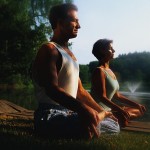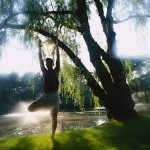This article is sponsored by ELANVEDA. Do you want to minimize wrinkles? Try Elan Skin Renue! Elan Skin Renue is a unique Ayurvedic blend of essential oils. http://store.elanveda.com/Skin-Renue-p9.html. When used consistently, this all-natural solution improves radiance and minimizes fine lines and wrinkles of the face and neck. Chock full of natural and organic essential oils, Elan Skin Renue is a power-packed blend with antioxidant oils. Simply apply 4-5 drops of Skin Renue to your face and neck and enjoy the youthful glow that follows! Enter HYW15SR for a 15% discount as our gift to you. (Expiration 10/15/12.) Find ELANVEDA’S entire product line here, www.elanveda.com. Email via info@elanveda.com or call them directly, 310.570.9535.
 Workout Strategies for the Active Traveler
Workout Strategies for the Active Traveler
Written by Amy Christensen
I’m not going to sugarcoat this: Staying active while you’re traveling is incredibly challenging. Unless you plan your vacation around a specific adventure or excursion (i.e., rafting the Grand Canyon or trekking in Nepal), getting outside or keeping up with your regular workout routine takes serious dedication and diligence.
The first, most important thing to do is decide that staying active is going to be a priority while you’re traveling. It’s way too easy to sleep in, have that extra drink, or skip a workout to go do something else. So before you leave; before you pack—decide and commit.
There are things you can do to make it easy (okay, easier) to stay active on the road whether you’re traveling on business with back-to-back meetings, or you’re on vacation enjoying the eat-beach-nap-eat-nap-eat again routine.
Create and Put Your Plan in Place Ahead of Time
Once you’ve made the decision to commit, start planning. What activities do you enjoy and are they feasible (based on your available time and location?)
Call your hotel ahead of time and find out if they have a gym, what the hours are and what exercise equipment they have. If the gym isn’t your thing (or you’re camping), find out where the closest bike paths, trails, pools, yoga studios or climbing gyms are located.
Consider what kind of transportation you’ll need and make the necessary arrangements.
Running and walking are two of the easiest ways to stay active outside without too much hassle. Call the local running store for information on hosted group runs.
If you’re a cyclist, check out rental options or bring your bike with you (best if you’re driving) and research local group rides.
If you climb, head to a site like http://www.ClimbFind.com/ to find a partner or hit up the local climbing gym.
Recreation centers usually offer lap swimming, yoga and Pilates. Call or check online for fees, location, schedule and hours.
Time for Action!
Once you arrive at your destination, it’s time to take all the research and planning and get active. Mornings are often the best times to squeeze in activity. Set an alarm for not only the morning, but consider a bedtime alarm to help you get to bed with plenty of time to sleep.
Stay safe! Is the area you’re in relatively safe? Bring a cell phone, cash, credit card and map. Go with a buddy if possible. Be sure you know your route, along with the name and address of your accommodations.
And finally, have fun with it and remember not to be too hard on yourself. Set reasonable goals and learn over time what works and what doesn’t. Don’t be afraid to experiment and try new things. That’s what traveling is all about right? Enjoy exploring, discovering and learning!
This article is written by Amy Christensen. Amy is a certified life coach with a passion for helping women step out of their comfort zone and break through self-limiting barriers. Based in Boulder, CO, her company, Expand Outdoors, focuses on creating healthy, sustainable, and fun lifestyle changes. Contact her at amyc@expandoutdoors.com or via http://www.expandoutdoors.com
 Subscribe
Subscribe







